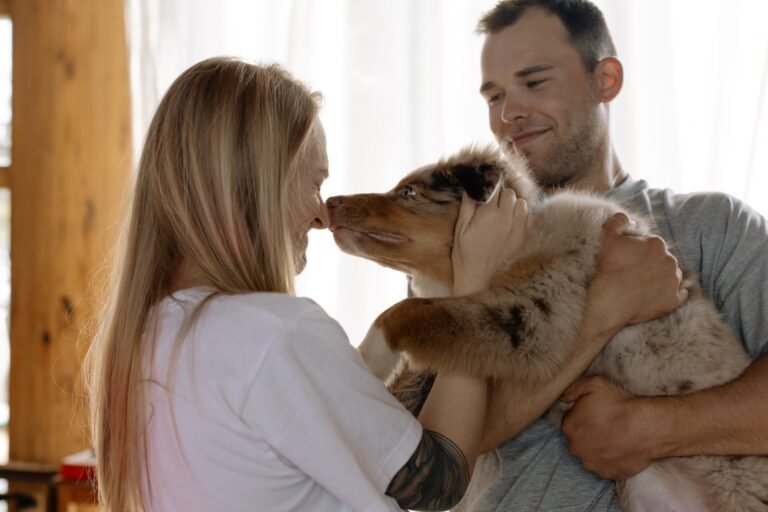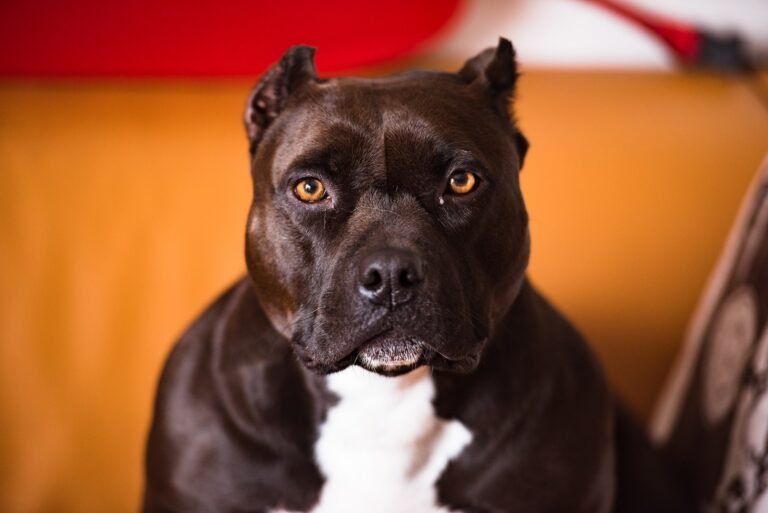Can my dog catch a cold or the flu?

A viral disease that we encounter every winter, colds or flu can also affect our dogs. Depending on the breed, your animal will be more or less sensitive to cold, wind, and humidity which could see the signs of a cold to appear. Generally mild, the infection lasts from a few days to a week. If the symptoms persist, consult your veterinarian without delay to make sure that it is indeed a cold and not dog flu, which can prove fatal for your companion.
Cold symptoms in dogs and their causes
A viral disease that attacks the respiratory system, the common cold is contagious and is easily transmitted from dog to dog, but also from dog to cat. You must therefore be vigilant when your loulou shows signs of contamination.
Signs of cold infection in our canine companions
- Cough ;
- Runny nose ;
- Sneezing;
- Wheezing ;
- Fatigue and depression;
- Decreased appetite;
- Moderate fever.
Of solid health, our doggies rarely catch a cold. Nevertheless, some breeds that have no or very little undercoat will be more sensitive to temperature differences and will catch this famous “cold snap”. Puppies, older dogs, or dogs suffering from pathology will be more prone to viruses and may develop viral diseases more easily. Particular attention should be paid to the evolution of symptoms to protect him from serious complications such as pneumonia.
Causes of viral infection in dogs
Several vectors can lead the animal to catch a cold. Contact with an infected dog, but also its state of health, its breed, and the environment. An animal whose immune defenses are weakened like an elderly dog or suffering from another pathology will more easily contract a cold. Puppies, whose immune defenses are still immature, will also be more susceptible to viral infections.
Depending on the breed, some of our companions are likely to develop a cold more often. This is particularly the case for dogs with short or fine hair and who have little or no undercoat:
- Dachshund;
- cocker spaniel;
- Mexican Hairless Dog;
- Chinese crested dog.
Generally speaking, smaller dogs will be more sensitive to lower temperatures, wind, and humidity than the Siberian Husky, Newfoundland, or Leonberger. It is necessary to put in place certain measures when autumn and winter bring freshness and humidity to protect your animal.

How to prevent colds in dogs?
If the breed you have chosen is particularly sensitive to the cold, or if you have just welcomed your puppy, certain solutions can save them this inconvenience, which can have serious consequences for their health.
When temperatures drop below 5°C, some of our doggies will feel discomfort and may catch a cold. To avoid this, dog coats are recommended. They allow them to maintain an appropriate body temperature and those with the cold who refuse outings in the frost will appreciate them more. If your canine companion has an immoderate love of puddles and swimming in all seasons, or if it rains, dry it off when you get home to prevent the inconvenience and worry caused by a viral infection. The heating mat can also be a wise investment that your dog will appreciate. You can strengthen your companion’s immune system by asking your veterinarian. Finally, if you have several pets and one of your doggies has a cold, isolate him from the pack while he recovers. If the dog’s cold does not pass our immune barrier, it is contagious for its congeners.
Should we treat the cold of our canine companion?
Just like us, the common cold is a viral infection that clears up within days. There is no need to run to your vet at the first runny nose or sneeze. However, to prevent superinfection, it is still necessary to monitor your condition and make an appointment quickly if:
- The signs persist for more than a week;
- Its temperature exceeds 39°C;
- Or if he becomes very listless and refuses to eat.
To help your dog fight infection faster and promote recovery, you can shorten walks and limit playtime. Just like us, the immune system fights the virus and tires the body, above all it needs rest. Games can also increase coughing spells and lead to energy expenditure. Offer him a quiet, warm place where he can regain his strength and find a good mood. Remember to leave a bowl of fresh water within reach so that he can properly hydrate.
Although the common cold in dogs is, just like in humans, benign, certain diseases with similar manifestations can be fatal for our companions. This is the case of distemper, kennel cough, and dog flu which can lead to serious complications.
Distemper, viral and incurable
Transmitted by bodily secretions and by direct and indirect contact, the Morbillivirus virus does not tolerate high temperatures well and is found particularly in autumn and winter in unvaccinated individuals. Close to the human measles virus, it particularly affects puppies that have not yet received the primary vaccination. Saliva, urine, stool, discharge from the eyes or the muzzle sign its presence. The primary infection can therefore occur from one animal to another very quickly, but also when we handle a carrier puppy, then another, without prophylaxis such as hand washing. It is for this reason that many farms ask you, during your visits, to wash your hands between each box and to clean your shoes in the footbath. Three forms characterize distemper. The respiratory form is similar to the dog’s cold, the intestinal form, and the nervous form. Vomiting and diarrhea quickly accompany the respiratory signs. Virulent, a high fever for 48 hours can sign the infection, the attack is often serious and can lead to the death of your canine companion. There are no specific antivirals for distemper, hospitalization is often required and serious sequelae persist in the case of nervous system involvement. The vaccine remains the best weapon to protect your dog because the vital prognosis is engaged. In addition, the broad-spectrum treatments put in place by your veterinarian do not guarantee the animal’s survival against this pathogen.
Kennel cough, a highly contagious disease
Characterized by a strong, dry, hoarse cough. The affected animal attempts to vomit and expectorate. Other cold-like symptoms may appear like runny nose and eyes, sneezing, and fever. The clinical signs can last more than two weeks and are caused by different pathogens:
- Adenovirus ;
- Herpesvirus ;
- Reovirus ;
- Parainfluenza;
- Bordetella bronchiseptica.
These can act alone or in combination and cause inflammation of the trachea and bronchi of your canine companion. Contagious, it spreads from truffle to truffle. Puppies and dogs easily contract it at sporting or recreational gatherings, exhibitions, breeding, or boarding. Taken early enough, the pathology can be treated well and the vital prognosis of the animal is not engaged. However, if kennel cough is not detected in time, the clinical signs progress to pneumonia, which in rare cases has been fatal. The best prophylaxis remains vaccination because canine infectious tracheobronchitis is very contagious. Two forms of vaccines are available to protect your pooch: intradermal inoculation or intranasal spray. Your veterinarian will learn about your animal’s lifestyle and its diagnosis to offer you the appropriate vaccine.
From benign to lethal, the canine flu also deserves our full attention and its symptoms, similar to those of the common cold, should alert you.

The dog flu, history, transmissions, symptoms, and treatments
Studied only since 2004, canine flu is relatively recent. Possessing manifestations similar to a dog’s cold, it is detected by essentially respiratory symptoms. If it worries recently, it is because its particular transmission questions researchers about possible transmissions between different species.
A mutated virus?
It was in 2004 that 22 racing greyhounds contracted the virus subtype H3N8. This form of flu usually known in the equine environment had just crossed the immune barrier and claimed 8 victims in dogs. Scientists assume that the germ mutated from the A H3N8 form in the animal’s body, where it adapted. It would therefore have passed directly from the horse to the dog without prior recombination. This viral form is not transmissible to humans. Viral infection is progressing rapidly in the United States, where 20,000 new cases were recorded in 2005 with a lethality of 5 to 8%. Other pathogens, such as H3N2, discovered in 2015 in the United States seem to cause cross-species contamination in animals: cats from an animal shelter contracted the H3N2 virus in 2017. These two forms of influenza are not transmissible to humans. For the moment, there are no cases of transmission of human flu to dogs, however, during the H1N1 episode of 2009, a cat was affected by the disease.
The transmission of the flu between our canine companions
Dog flu is usually transmitted by droplets secreted into the air when the infected animal barks, coughs, sneezes, or breathes. This is referred to as aerosol transmission. Confined spaces, such as farms, shelters, and grooming salons allow dog-to-dog spread and are known as outbreak hotspots. Contaminated objects such as toys, bowls, collars, and leashes can also indirectly spread the virus. We can become vectors by carrying the virus on our hands and clothes because it can survive 12 hours on our skin, 24 hours on our clothes, and 48 hours on other surfaces. The incubation period varies by strain. From 1 to 5 days for H3N8 and from 2 to 8 days for H3N2, the incubation of the pathogen does not necessarily lead to disease in our four-legged companion, who can also be asymptomatic healthy carriers. They can therefore contaminate their congener without us knowing that they are carriers.
Canine Flu Symptoms
Just like the dog’s cold, the disease attacks your pet’s respiratory system. The virus affects the nasal cavities, bronchi, and lungs. Faced with viruses, the immune system deploys and causes inflammation causing rhinitis, tracheitis, bronchitis, and bronchiolitis. The replication of the virus weakens and destroys the cells of the respiratory mucous membranes. Their multiplication promotes bacterial superinfections.
The clinical signs of a mild form of canine flu are coughing and sneezing. Thick, purulent discharge from the nose and eyes is also present and accompanied by moderate fever. Unlike the common cold, the infection lasts 10 to 21 days and the cough remains present despite veterinary treatment. In its severe form, the lethargic dog has a high fever of over 41°C and struggles to breathe. Severe, this untreated form leads to the death of the animal in half of the cases.
How to protect your dog from canine flu?
The canine flu mortality rate is less than 10% when veterinary care and support are given to help your pet fight flu-like illness. As in the case of many viral infections, there is no treatment to eliminate the pathogen, but your veterinarian will offer you various therapies which will aim to:
- Control the development of bacterial superinfections;
- Propose antitussives to protect the epithelial cells of the lungs;
- Prescribe analgesics to relieve your dog’s pain;
- Recommend taking an antipyretic to lower the fever.
For your part, you will have to watch that your pet hydrates and eats properly. Short hygienic walks and rest will allow him to recover after two to three weeks of convalescence. If you have several animals, you will have to separate them to avoid contamination and confine your patient to the garden to protect the neighborhood dogs for four weeks.
Although vaccines are more recommended for so-called high-risk dogs, be aware that they can protect your four-legged friend against the H3N8 and H3N2 strains of canine flu. Take advice from your veterinarian to choose the most appropriate form to protect your canine companion. You can also set up barrier gestures if your pooch frequents a dog park, puppy school, or groomer. By adopting these simple gestures, you will limit the risk of contamination in areas or situations at risk for many viruses:
- Hand washing ;
- Changing and washing your clothes after the dog leaves;
- Cleaning collars and leashes.
In summary, if the cold does exist in our canine companions when the symptoms persist, consult your veterinarian. If he is not vaccinated, discuss with his health professional to better weigh the benefit of vaccination and put in place the prophylactic actions that will protect him.






